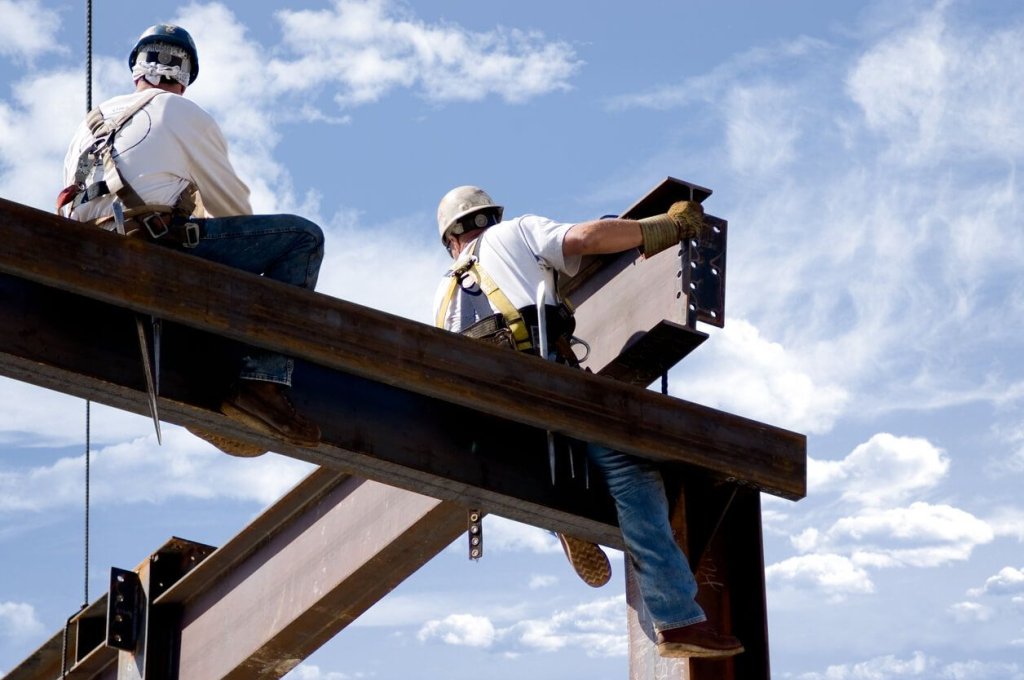Hierarchy of Controls Safety Talk
Job sites are dangerous places and can have numerous hazards at any given moment. As employees, it’s important to know how to protect yourself from these hazards by using controls. There are typically multiple safeguards available at your disposal to control a single hazard, ranging in effectiveness.
To help evaluate these safeguards, in this toolbox talk we will discuss a safety mechanism known as “the hierarchy of controls” and provide an example of using it on the construction site to evaluate and mitigate risk.
What is the hierarchy of controls?
The hierarchy of controls is a system used in the construction industry to minimize or eliminate exposure to hazards. The hierarchy of controls has five levels of actions to reduce or remove these hazards, sorted from most to least effective:
Elimination
Substitution
Engineering Controls
Administrative Controls
Personal Protective Equipment
The Hierarchy of Controls
It is important that all employees understand each of the five levels of the hierarchy of controls and how they work. Let’s go into more detail on each level:
Elimination
The best solution in any hazardous situation would be to physically remove the hazard. “Elimination” is the preferred solution to protect workers because without the hazard present, no exposure or injury can occur.
Substitution
The next best solution would be to use substitution, or replace the hazardous object, material, or process with something less hazardous. Before working in a hazardous situation, evaluate if there is an option that isn’t as hazardous. This could involve actions such as using a safer tool to get the job done or swapping out a toxic substance for an environmentally-safe material.
Engineering Controls
Engineering controls aim to isolate workers from the hazard. When performing a hazardous task, evaluate if there are any engineering controls that you can implement to keep the employee safer. This includes things such as physical barriers, equipment guards, and ventilation systems.
Administrative Controls
Administrative controls are put in place to change the way people work. These include things such as job training, job rotation, breaks, company policies, etc. Administrative controls limit exposure to hazards by adjusting work tasks or schedules. For example, not all employees may need to be on a jobsite when a hazardous task is being performed, limiting the number of employees at risk.
PPE
Personal protective equipment, or PPE, is used to protect the worker from the hazard. The task you are performing will determine how much or how little PPE you should wear to protect yourself. Some examples of PPE are:
Gloves
Steel Toe Shoes
Respirator
Coveralls
Earplugs
Hard Hats
Safety Glasses

Hierarchy of Controls Example
Let’s go through using the hierarchy of controls as a group with a real-life example. In this example, a painter will apply paint with a high level of VOCs to a metal surface in a factory.
Elimination Example
The application could be done by an automated process instead. That would take the dangers completely away from the painter himself. You should always look at all the options that there are when working in hazardous conditions.
Substitution Example
The painter can check to see if there is a lower level VOC that can be substituted in its place. Chemicals and hazardous solutions pose a risk to the individual who is using them. If there are safer options available, you should always opt to use those instead.
Engineering Control Example
The painter could use a variety of methods to help them be more cautious and safe during the application. A great way to protect the painter and the other employees who are in the building being painted, is to make sure there is proper ventilation to keep the fumes at bay.
Administrative Control Example
The painter can use administrative controls to ensure the exposure to hazardous substances is minimal. The length of time of exposure is important to pay attention to. Two painters can be hired so shift changes can be taken periodically.
PPE Example
The painter could use a few different PPE options to protect themself from the hazardous fumes and chemicals of the paint, such as goggles, a respirator, and coveralls.
Remember The Hierarchy & Stay Safe
Above, we went over what the hierarchy of controls is and how its five levels can be used to minimize or eliminate risk on the jobsite. Remember this safety mechanism the next time you’re on the job site and follow the controls from top to bottom for best results.
Find and schedule topics faster
Raken's toolbox talk app makes it easy to choose from a pre-loaded library (or upload your own), then schedule and assign topics for any project. We'd love to show you how in a demo, and get you started on a free trial.